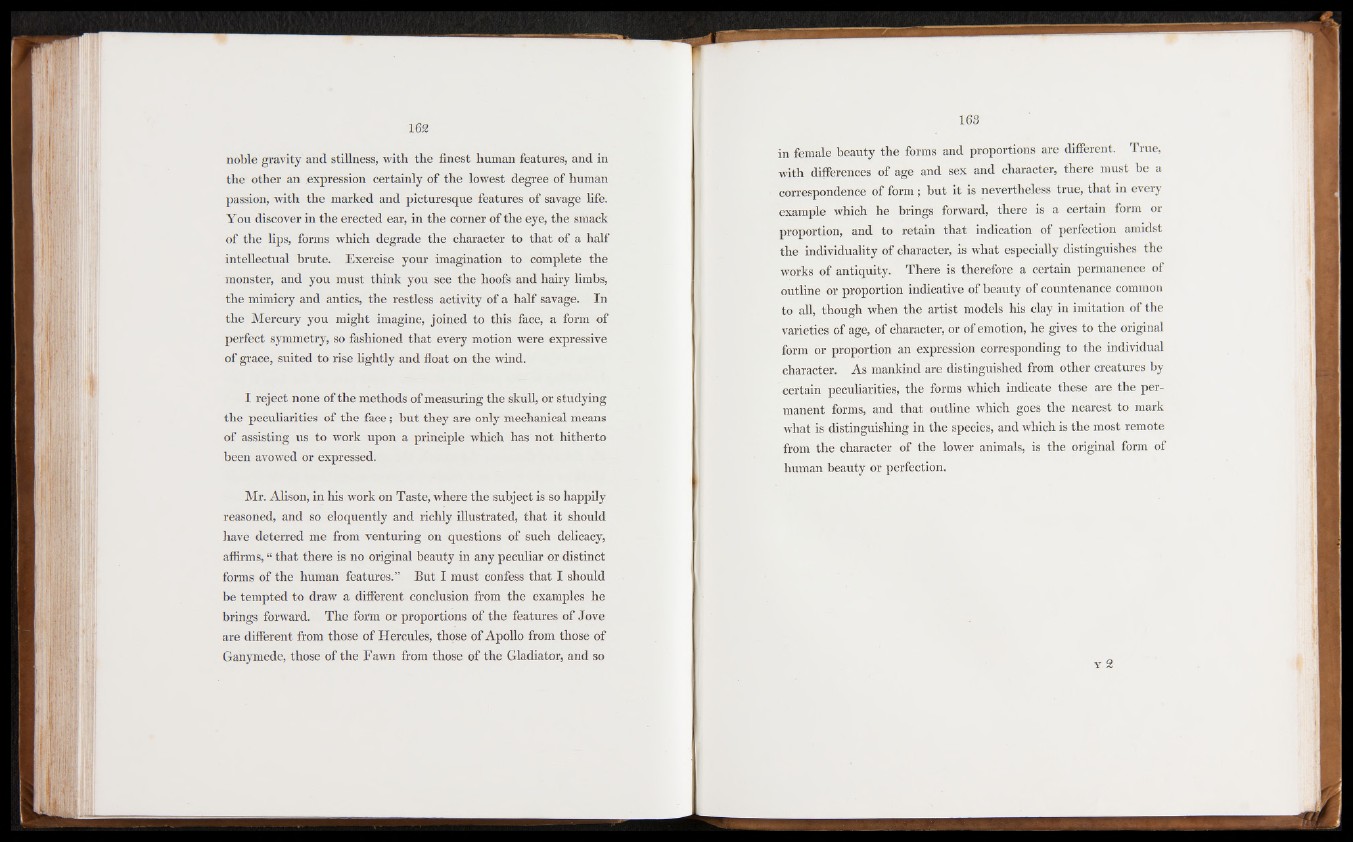
noble gravity and stillness, with the finest human features, and in
the other an expression certainly of the lowest degree of human
passion, with the marked and picturesque features of savage fife.
You discover in the erected ear, in the corner of the eye, the smack
of the lips, forms which degrade the character to that of a half
intellectual brute. Exercise your imagination to complete the
monster, and you must think you see the hoofs and hairy limbs,
the mimicry and antics, the restless activity of a half savage. In
the Mercury you might imagine, joined to this face, a form of
perfect symmetry, so fashioned that every motion were expressive
of grace, suited to rise lightly and float on the wind.
I reject none of the methods of measuring the skull, or studying
the peculiarities of the face; but they are only mechanical means
of assisting us to work upon a principle which has not hitherto
been avowed or expressed.
Mr. Alison, in his work on Taste, where the subject is so happily
reasoned, and so eloquently and richly illustrated, that it should
have deterred me from venturing on questions of such delicacy,
affirms, “ that there is no original beauty in any peculiar or distinct
forms of the human features.” But I must confess that I should
be tempted to draw a different conclusion from the examples he
brings forward. The form or proportions of the features of Jove
are different from those of Hercules, those of Apollo from those of
Ganymede, those of the Fawn from those of the Gladiator, and so
in female beauty the forms and proportions are different. True,
with differences of age and sex and character, there must be a
correspondence of form; but it is nevertheless true, that in every
example which he brings forward, there is a certain form or
proportion, and to retain that indication of perfection amidst
the individuality of character, is what especially distinguishes the
works of antiquity. There is therefore a certain permanence of
outline or proportion indicative of beauty of countenance common
to all, though when the artist models his clay in imitation of the
varieties of age, of character, or of emotion, he gives to the original
form or proportion an expression corresponding to the individual
character. As mankind are distinguished from other creatures by
certain peculiarities, the forms which indicate these are the permanent
forms, and that outline which goes the nearest to mark
what is distinguishing in the species, and which is the most remote
from the character of the lower animals, is the original form of
human beauty or perfection.